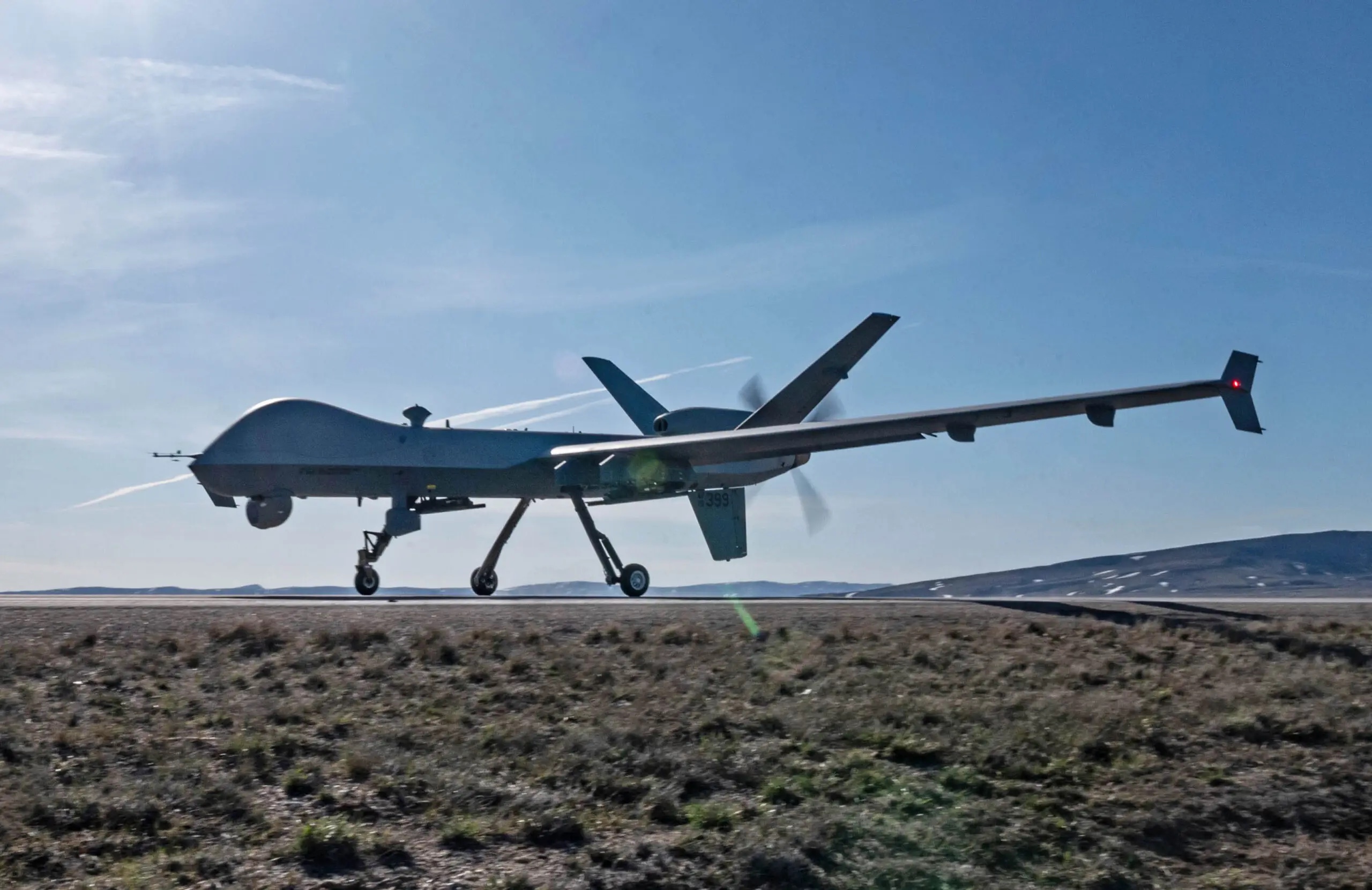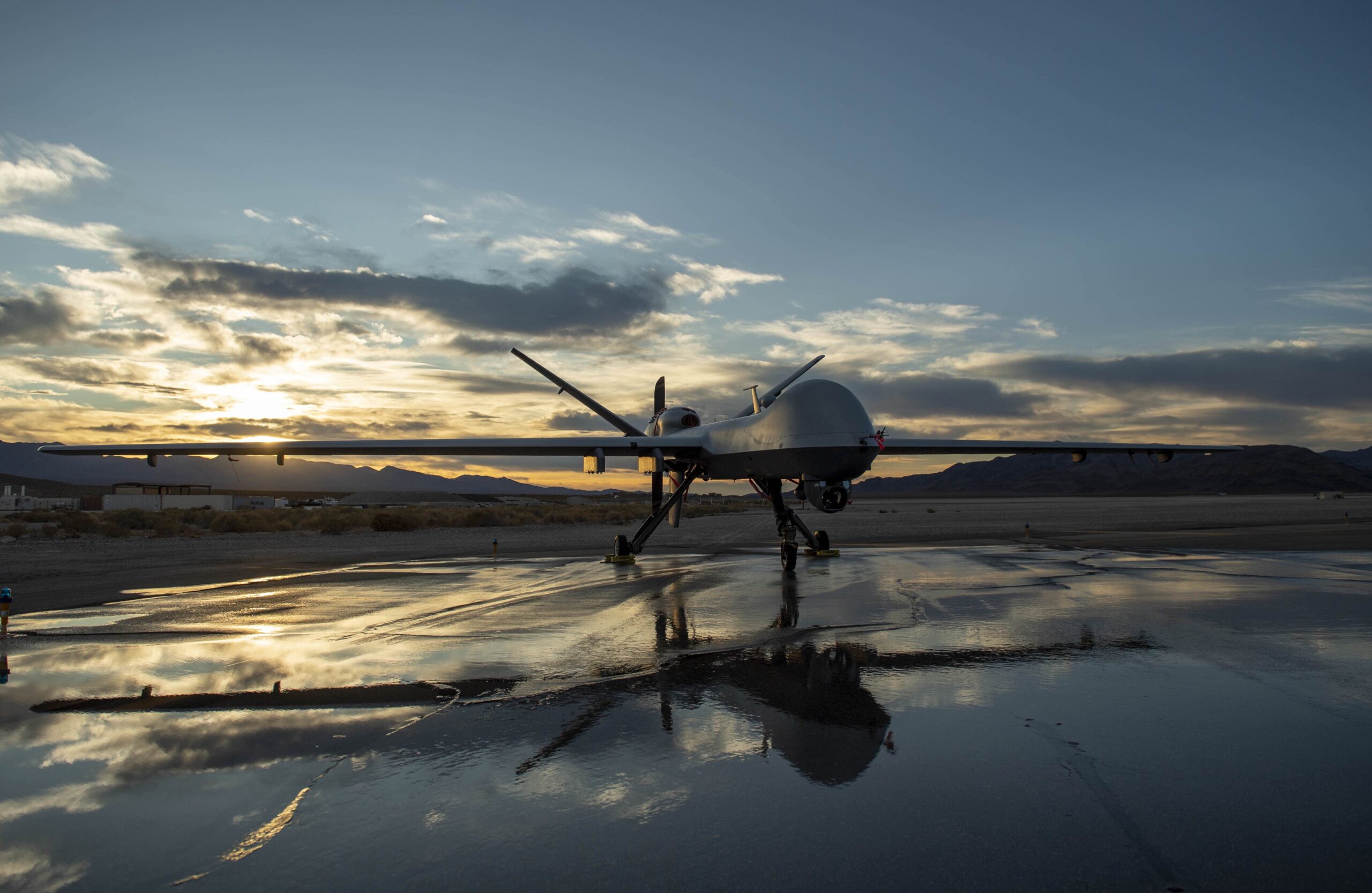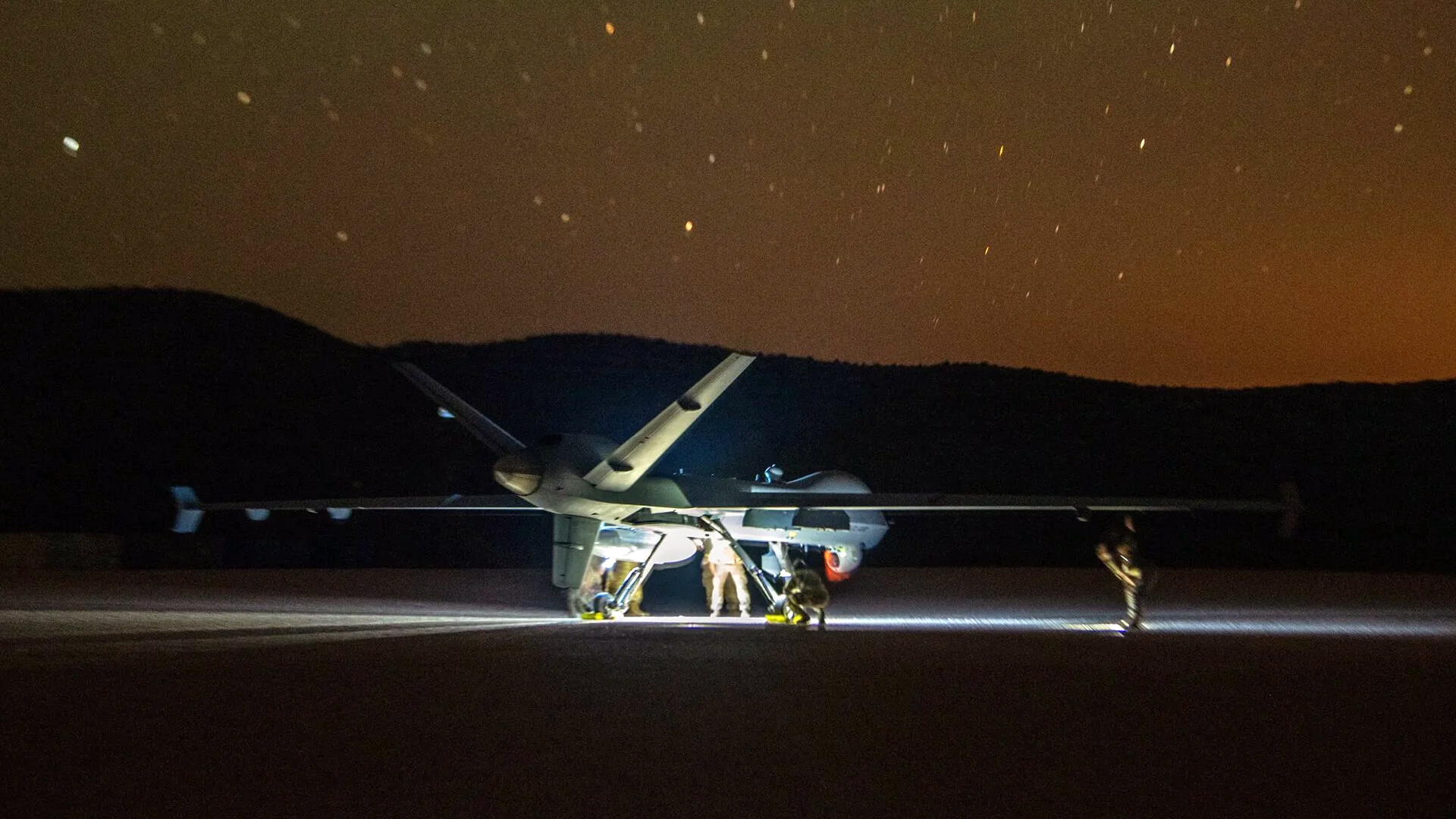A U.S. Air Force MQ-9 Reaper drone has conducted a landing on a remote dirt strip for the first time. Connected with the landing, the service also demonstrated the MQ-9’s ability to carry small, but critical cargoes. This comes as the Air Force and others look for new ways to utilize the Reaper amid concerns about its vulnerability in higher-end conflicts, namely with a near-peer competitor like China or Russia.
The dirt strip landing took place on June 15 at the Nine Mile Training Center, just south of Fort Stockton, Texas, according to a recent Air Force press release. Members from 2nd Special Operations Squadron, 727th Special Operations Aircraft Maintenance Squadron, and 311th Special Operations Intelligence Squadron teamed up with airmen from 26th Special Tactics Squadron, for the test.

Historically, General Atomic’s MQ-9s have been launched and recovered via split operations. This involves a crew piloting the aircraft from a ground station in the continental United States, while another, more specialized crew, launches and recovers the drone via line-of-sight control links. Those specialist crews would also be required to electronically mark reference points on the runway using an actual Reaper. As such, MQ-9s were unable to self-deploy to airstrips where data hadn’t been collected beforehand, and which did not have other supporting infrastructure setup. But this has changed in recent years and the MQ-9 now has the ability to operate from impromptu locations without its past localized control footprint.
The test at Nine Mile Training Center demonstrated how MQ-9s can be launched and piloted remotely entirely via beyond-line-of-sight satellite links. This capability – known as Automatic Takeoff and Landing Capability (ATLC) – is one the Air Force has been proving out for years now, with a milestone test taking place back in 2021. With the ATLC system, MQ-9s use their targeting pods and other sensors to generate reference points for automatic landing and takeoff capabilities from the air.
As part of the dirt strip landing test, the Air Force also exercised the MQ-9’s ability to perform ‘off the menu’ options, too. Here, the ‘Reaper Express’ operational concept was tested, by which a travel pod was utilized to execute a critical resupply of the 26th Special Tactics Squadron on the dirt landing zone.

“We call it ‘Reaper Express’, which is essentially just using a travel pod to develop an operational concept of delivering critical items to austere locations using the MQ-9,” said Col. Brian Flanigan, 2nd SOS director of operations. “It may not be able to carry much, but what it can hold might be the difference between getting that critical aircraft part to an isolated airfield or bringing in a blood supply for casualties sustained during a base attack.”
Of course, alternative means of resupply of critical spare parts, medical supplies, or even small arms amunition to austere locales is something the U.S. military has been looking into for years, and could be especially important during distributed future operations. Moreover, as The War Zone has noted in the past, transporting small payloads might prove critical in those, and other, contexts. Small drone shipments of 30 pounds or less are often enough to deliver critical emergency rations or, as Flanigan indicates, blood supply, which is perishable. The Navy has also claimed that when ships encounter problems as a result of logistics-related issues that leave them partially mission-capable or non-mission-capable, 90 percent of the time this can be resolved by the delivery of a component weighing 50 pounds or less. The exact weight of the travel pod the MQ-9 carried during the Nine Mile Training Center test remains unclear, however.
In order to access the remote dirt strip, 12th Aircraft Maintenance Unit from the 727th Special Operations Aircraft Maintenance Squadron supported the test using Agile Combat Employment, or ACE, tactics, techniques, and procedures, the Air Force’s press release notes. Broadly, ACE is designed to ensure that the Air Force is able to perform irregular deployments quickly from an expanded number of airbases around the globe. This includes remote locations, in the event that conventional airbases are put out of operation or otherwise held under threat. Rapidly moving from location to location is also part of this overall concept.
“This initiative was significant in terms of refining maintenance ACE capabilities because it provided insight into how the aircraft handles landing in an austere environment,” said Maj. Doniell Mojazza, 727th SOAMXS director of operations. “This scenario both challenged and empowered 12th AMU maintainers to assess risk utilizing their expertise and innovation to ensure aircraft air worthiness and mission success.”
In another recent validation of the drone’s ability to operate from varied locales with ACE in mind, the Air Force operated an MQ-9 from a highway remotely during Exercise Agile Chariot. Landing the Reaper on the highway was conducted by the 2nd Special Operations Squadron (2nd SOS), part of the 919th Special Operations Wing at Duke Field, Florida. The MQ-9’s takeoff and return flight from the highway was handled by the 65th SOS from Hurlburt Field, Florida. While specific details on the type of mission the MQ-9 took part in were not provided, Air Force officials underscored the drone’s growing ability to “launch and recover from remote locations.”

Being able to operate MQ-9s from remote locations, particularly those without usable runways or adequate stretches of roads, would likely be significant during the distributed operations of the kind the U.S. could face in a conflict with a near-peer state like China or Russia. As the Air Force doesn’t see the MQ-9 as being survivable in high-risk environments in future conflicts, expanding where these drones can operate from – and exploring new roles for them – is of high priority.
“This capability [remote dirt strip landings] will be critical in ‘tomorrow’s fight’ and nests perfectly with the Air Force’s Agile Combat Employment concept that focuses on smaller footprints, distributed operations and increased survivability while generating combat power,” said Flanigan. “We are demonstrating what is possible when you leverage Citizen Air Commandos and our diverse backgrounds to take an existing capability like [Satellite Launch and Recovery] and apply it to the future fight.”
As we outlined previously, there would be huge potential benefit for having MQ-9s being able to access multiple Forward Arming and Refueling Point (FARP)s in the Pacific without the need to transport specialized launch and recovery elements. This is particularly true in terms of fueling and rearming the drones from austere locales without runways or roads, rather than having them return to a fixed base. Indeed, the ability to quickly land and execute an engine running offload from remote locales could become a secondary or tertiary mission.
“This provides options compared to waiting multiple weeks until intra-theater airlift can support [forward-deployed forces],” Flanigan notes. Of course, using MQ-9s in this way doesn’t remove the need for logistic chains, particularly given concerns over the drone’s survivability.

Being able to support ACE-focused operations from austere locales, particularly in an ‘island hopping’ conflict in the Pacific, would be extremely valuable, too. Providing communications relay, collecting localized multi-intelligence, as well as kinetic defense for remote locations would also prove significant in the Pacific context. Here, the MQ-9’s ability to provide long-endurance, medium-altitude surveillance – for which it was primarily designed – as well as its ability to have various types of podded systems bolted on could be used to even greater effect from very hard-to-reach island outposts.
How far the MQ-9’s ability to operate from very remote locations, as well as transport small critical supplies, affects arguments over its operational relevance will only be revealed in time. While the MQ-9 seems to be entering the twilight of its career with the Air Force, the drone has received a number of critical upgrades of late – including new air-launched drone capabilities, additional sensors, self-defense pods, and other mission payloads.
Yet even as the Air Force pivots to new forms of uncrewed aircraft with high degrees of autonomy, demonstrating the ability to operate MQ-9s from remote locations has wider significance, as new types may also be called upon to operate from austere locales during a major conflict. This could help inform more general concepts of operation in the future, filtering out to other services.
The MQ-9 is certainly making a case for itself as more advanced types are on the horizon, now adding cargo hack to its repertoire.
Contact the author: oliver@thewarzone.com
